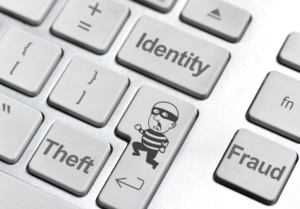Louisiana Woman Tries to Buy a Million Dollar Home with False Documents
Have you ever seen a house and thought…I wish I could afford that? Some people actually try it, but let this story be a lesson learned: if you can’t afford the cost of a house, you probably shouldn’t try to buy it.

Pamela Chandler was arrested and now faces forgery charges after she tried to purchase a home with a million-dollar price tag. How did she do it? She used false documents. Chandler, who also goes as Pamela Goldwyn, was arrested by a special Financial Crimes Task Force in Bossier City, LA. She also has several warrants out for her in Texas with crimes including fraud and the exploitation of certain groups of people including children, the elderly or the disabled. She was booked in jail and was not given a bond, as she is a flight risk.
According to court records, Chandler, who lists her age as 47, has a permanent address in Athens, Texas, but also has addresses in Maryland and Louisiana. A local Bossier City realtor reported her to local law officials after she tried to use illegitimate paperwork to buy the home. She claimed to have a trust fund, but the paperwork just didn’t add up. As the task force began to investigate the situation, it was found that she had also altered a letter from a layer to try to convince the realtor that she had enough in this fake trust fund to buy the home. It was also discovered that she had used a number of aliases over the years. It is believed that she uses an alias in a specific area until law enforcement catches on to her scams, and then changes her name and moves to a new area.
Much of the problem here can be blamed on easily obtained fake IDs. The fact is, our existing identification systems are insufficiently secure, and our identifying documents are easily copied. Anyone with a computer, scanner and printer can recreate an ID. Outdated systems exasperate the problem by making it too easy to obtain a real ID at the DMV, with either legitimate or falsified information.
Some of the department of multivehicle new requirements of improving facial recognition include not smiling for your picture or smile as long as you keep your lips together. Other requirements meant to aid the facial recognition software include keeping your head upright (not tilted), not wearing eyeglasses in the photo, not wearing head coverings, and keeping your hair from obscuring your forehead, eyebrows, eyes, or ears.
The fact is, identity theft is a big problem due to a systematic lack of effective identification and is going to continue to be a problem until further notice. In the meantime it is up to you to protect yourself. The best defense from new account fraud is identity theft protection.
ROBERT SICILIANO CSP, is a #1 Best Selling Amazon author, CEO of CreditParent.com, the architect of the CSI Protection certification; a Cyber Social and Identity Protection security awareness training program.

 Innovis Credit Freeze
Innovis Credit Freeze
 Riess Looked Like her Victim
Riess Looked Like her Victim  The man arrested is Gary Hartman, and he is accused of killing and raping 12-year old Michella Welch. Donald Ramsdell, the Tacoma Police Chief, has said that computer modeling, police techniques, and advances in DNA identification has led his team to arresting Hartman on June 20th.
The man arrested is Gary Hartman, and he is accused of killing and raping 12-year old Michella Welch. Donald Ramsdell, the Tacoma Police Chief, has said that computer modeling, police techniques, and advances in DNA identification has led his team to arresting Hartman on June 20th. The study also showed a shift in how ID theft fraud was being done. Credit card accounts were the most common targets for new account fraud, we also see that there is a big uptick in other accounts being targeted, including PayPal accounts and e-commerce merchant accounts. We can also see that more than 30% of consumers in the US were notified that their information was part of a data breach, which is 12% higher than the year before. Social Security numbers also seem to be a favorite of ID thieves, as are credit card numbers. We also see that due to these breaches, consumers are becoming less trusting when it comes to companies and financial institutions that are storing personal data.
The study also showed a shift in how ID theft fraud was being done. Credit card accounts were the most common targets for new account fraud, we also see that there is a big uptick in other accounts being targeted, including PayPal accounts and e-commerce merchant accounts. We can also see that more than 30% of consumers in the US were notified that their information was part of a data breach, which is 12% higher than the year before. Social Security numbers also seem to be a favorite of ID thieves, as are credit card numbers. We also see that due to these breaches, consumers are becoming less trusting when it comes to companies and financial institutions that are storing personal data. There are a number of ways that an employee can steal:
There are a number of ways that an employee can steal: How Does This Happen?
How Does This Happen?























